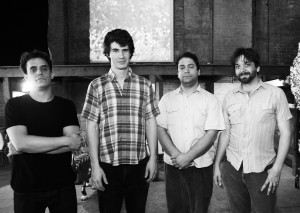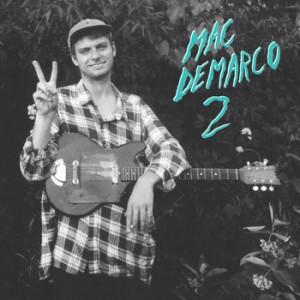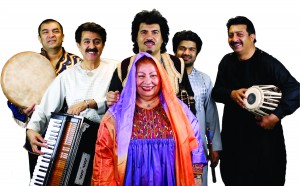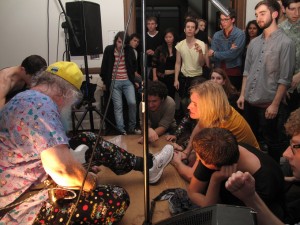Michael Darer ’15 attends a performance by Dither Electric Guitar Quartet in Crowell Concert Hall on November 16, 2012.

It’s easy to forget the sheer variability of an instrument like the electric guitar, which has been sequestered in such a distinctive part of our musical psyche, labeled by the deluge of pop and rock that we digest almost mindlessly day to day. We assume that we’re familiar with all the instrument can do, with the heart and soul of its sound because, well, with the sheer amount of music in which it appears, it seems nonsensical to think that somewhere in the musical universe there is an electric guitar that sounds nothing like the one we know. Ridiculous and overblown a comment as this may seem, it’s really the truth for most of us. If someone asked you to imagine the sound of the instrument, most of us would probably settle on similar tones. Maybe one person would realize the harsh dynamic screeching of Rage Against the Machine, while others conjure the more open glassy chords of U2, but in the end, it would be rare for someone to imagine a piece of music that others cannot recognize as coming from the prescribed instrument.
The Dither Electric Guitar Quartet, which visited Wesleyan on Friday, November 16, however, is not content with the homogenous image that guitar music represents to most music listeners. Through complex arrangements, varying in tempo, texture and organization, they’ve striven to reinvent the guitar, and reestablish the mass of sonic possibilities at the instrument’s disposal, for all and any who will listen. Based in New York and founded in 2007, the Dither Guitar Quartet is “dedicated to an eclectic mix of experimental repertoire, spanning composed music, improvisation and electronic manipulation”, a multivalent commitment that they displayed in full disorienting force during their recent performance. I’d like to consider myself someone who is familiar, or at least interested, in a wide range of musical styles, but even I found myself consistently wowed, and altogether lost (in the best way possible) during my time with their music.
Each piece of music that Dither played seemed to wind and fold upon itself, constantly expanding and contracting, reaching piercing ethereal highs and diving into throbbing opaque depths. Sections seemed to split off from the sound of the whole before snaking back around and rejoining the flow of the composition, combining with other, seemingly disparate portions in unique and magical ways. It was almost impossible to assume where a song might be headed, and even if one did end in some place similar to what I’d imagined, the route there was festooned with detours that I never could have anticipated. Few musicians can imbue their work with the sense of organic, wholly transcendent wonder that Dither did, and those who do often require a wide range of instruments. Here, however, with four copies of one tool, the quartet managed to create expansive and varied soundscapes, each so distinct from the next.
Musical improvisation in general has always floored me. As someone who thinks about things almost obsessively, the idea of just imagining and creating simultaneously is unbelievably impressive. As such, Dither was bound to blow my mind. It was impossible to tell which sections of pieces were pre-written and which were off the cuff, how much each player anticipated from his fellows and how much each had to adapt to along the way. But rather than making the songs sound wholly rehearsed, this unreal sort of synchronicity between musicians made every note seem tenuous and energized, every stretch of sound totally ephemerally fundamental. As songs shifted from serrated distortion to stinging pop clarity, every movement, dip, sidestep and leap rang out as monumental and crucial to the integrity of the whole. Listening to music, it’s very easy to discount certain pieces while exalting others within a song, waiting for the moments that touch us and forgetting the avenues that bring us to them. With Dither, there was no danger of this. Every single moment in every single song reached out. There were no half-developed bridges, only existing in order to reach a refrain or a crescendo. Instead, everything on display was just that: on display; on display in magnificent recondite beauty.
It was somewhat intimidating to think about writing up this event, knowing how hard it would be to describe the sound of the experience. Truly, part of the power of the concert was coming upon those moments in the music that seemed to dance around description, remove themselves from any sort of context or known rooting. And that’s what made the Dither quartet so unforgettable: knowing that, even if I were to see them again, I would never recover the exact place that I was moment by moment when I first heard them; knowing that even as I was attempting to understand and remember the music, it was receding back beyond explanation, gradually revealing the next evanescent jewel, so soon to disappear.





